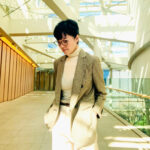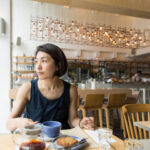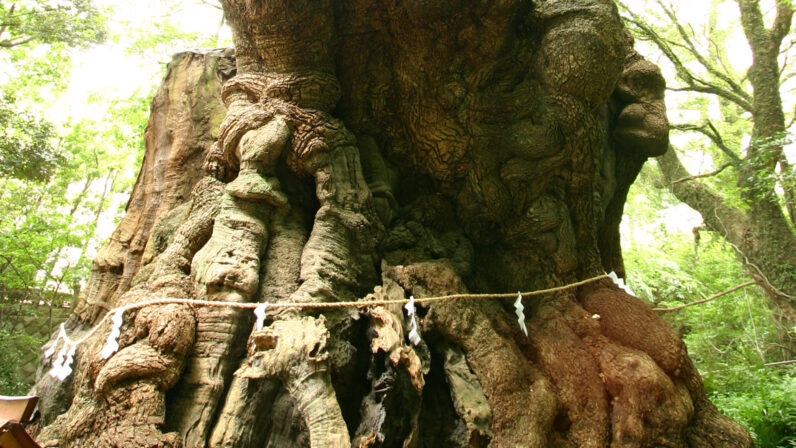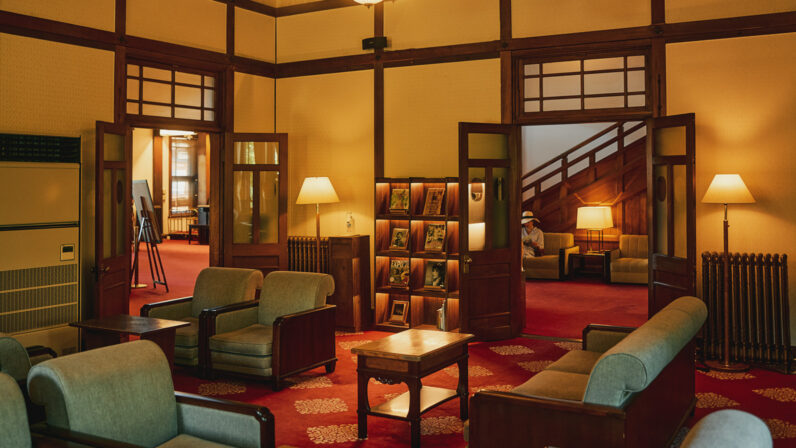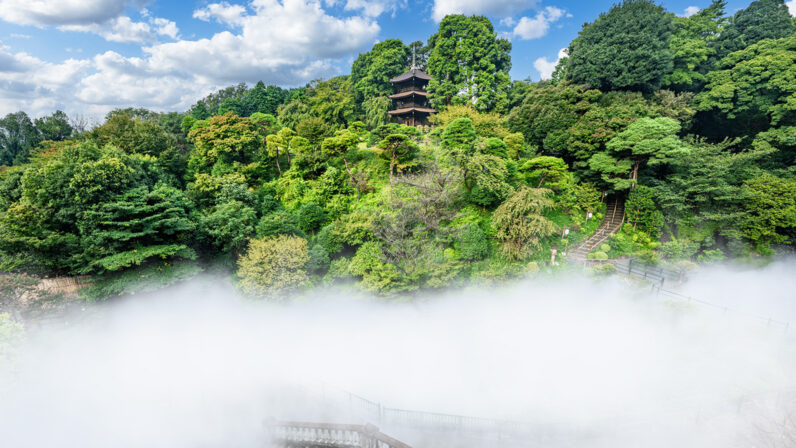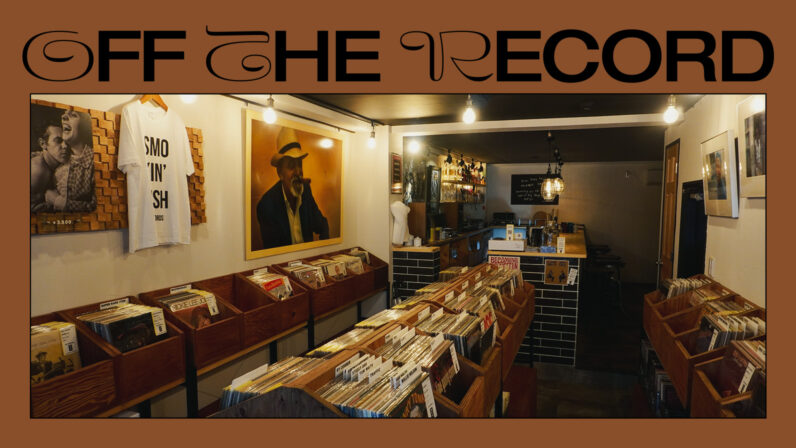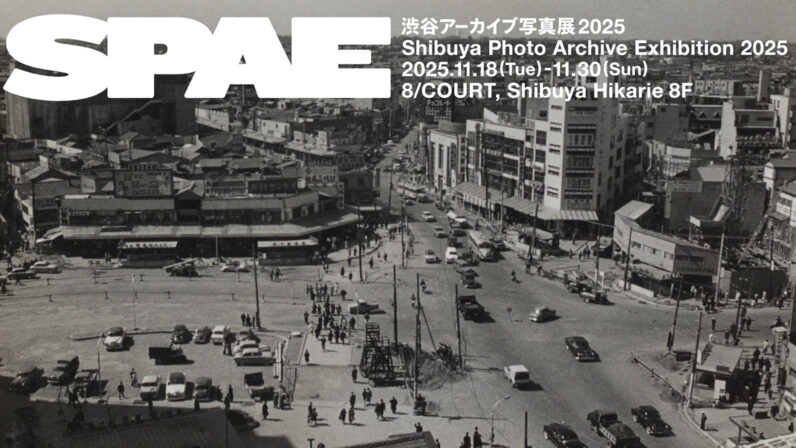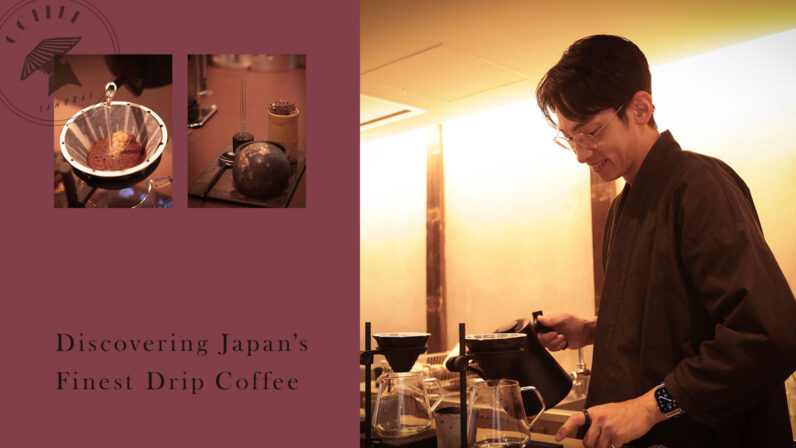Mademoiselle Yulia is a multifaceted talent. She is active in the fashion scene as a DJ while also producing her own kimonos. In this series, Yulia, who is well-versed in art and architecture, visits her favorite spots and discusses how she coordinates kimonos that harmonize with the surroundings. For the tenth installment, she visits CASUCA HISTORIA, a jewelry boutique housed in a registered cultural property that retains the vestiges of a pseudo-western-style building from the Taishō period. The space reflects the aesthetic vision of the boutique’s owner, who breathed new life into it, and it was here that Yulia experienced moments that truly set her heart dancing.

With its pastel tones, the renovated space evokes the feel of a classic English salon.
A Pseudo-Western Building Tucked Away Like a Secret Retreat
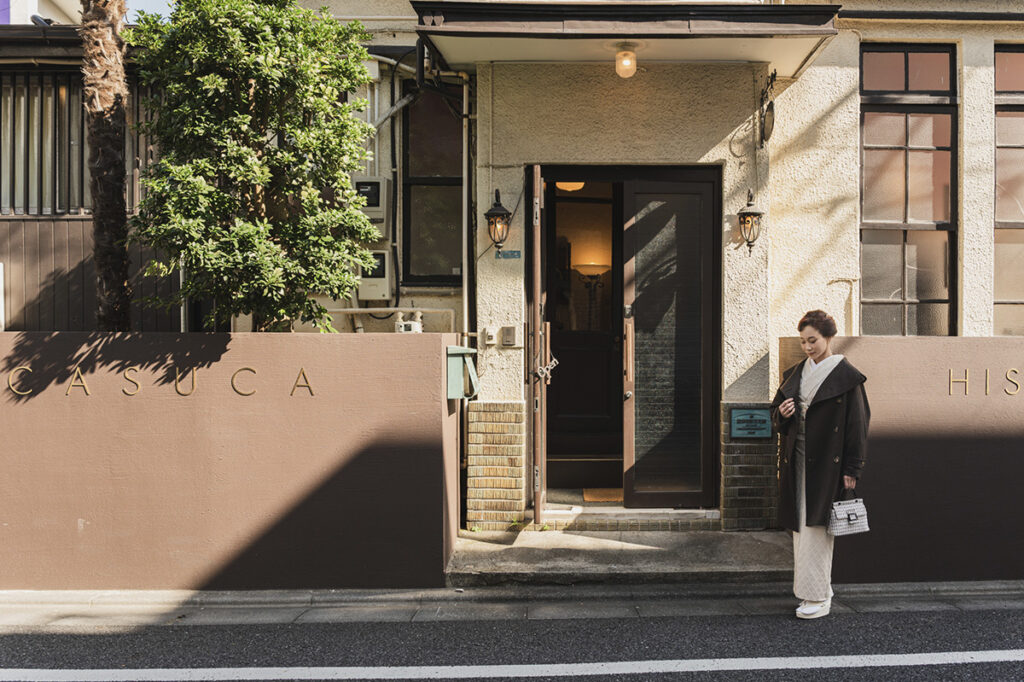
Yulia visited CASUCA HISTORIA on an early winter afternoon. She wore a new duo coat from KOTOWA, a design she had a hand in creating herself. Its rich dark brown cashmere perfectly complemented the timeless elegance of the building.
During the Meiji period, pseudo-Western-style architecture that mimicked Western designs became popular among Japan’s upper classes. They are called “pseudo-western” rather than simply “western-style” because, while the design follows western aesthetics, the buildings are based on wooden structures and feature details infused with the craftsmanship of Japanese artisans. The building Yulia visited was originally constructed in Kamakura in the early Shōwa period and later relocated to Meguro. Standing on this site for over 90 years, it is now a registered tangible cultural property of Meguro Ward.
“What really draws me in is that, whether in architecture or kimono, the period from Meiji to early Shōwa was a time when individuality shone through,” Yulia says. With a lively sense of anticipation, she stepped through the doors of CASUCA HISTORIA.

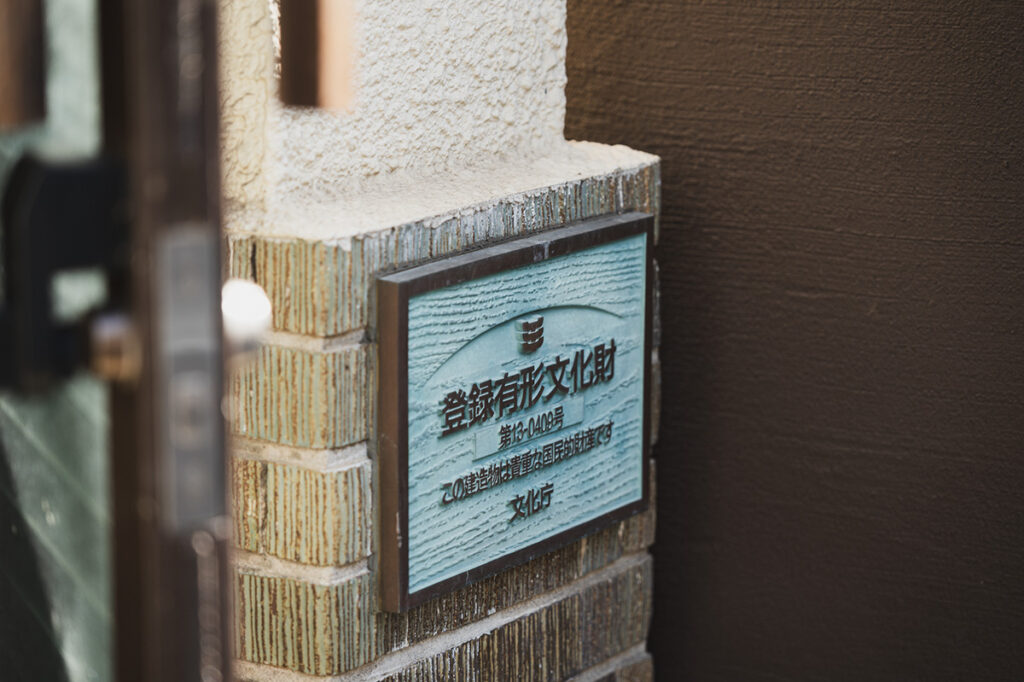
A classic, antique-inspired sign that fits the building’s graceful character.

Tomoko Yasuno, the stylist and jewelry designer behind CASUCA HISTORIA.
Beyond the entrance, lined with olive-green tiles along the lower walls, lies a high-ceilinged foyer. Looking up, pendant lights that have hung there since the building’s earliest days cast a soft, gentle glow across the space. “The milky glass shades carry traces of the Showa-era blend of Japanese and Western styles,” Yulia remarks, drawn to the charm of a bygone era. The original owner was a military doctor who served in World War I, and even after the building was relocated to Meguro, it continued to function as a clinic. The spacious foyer and unique layout give the building a presence that sets it apart from a typical residence. It is also said that the design was created by someone who had worked on the former residence of Marquis Maeda.
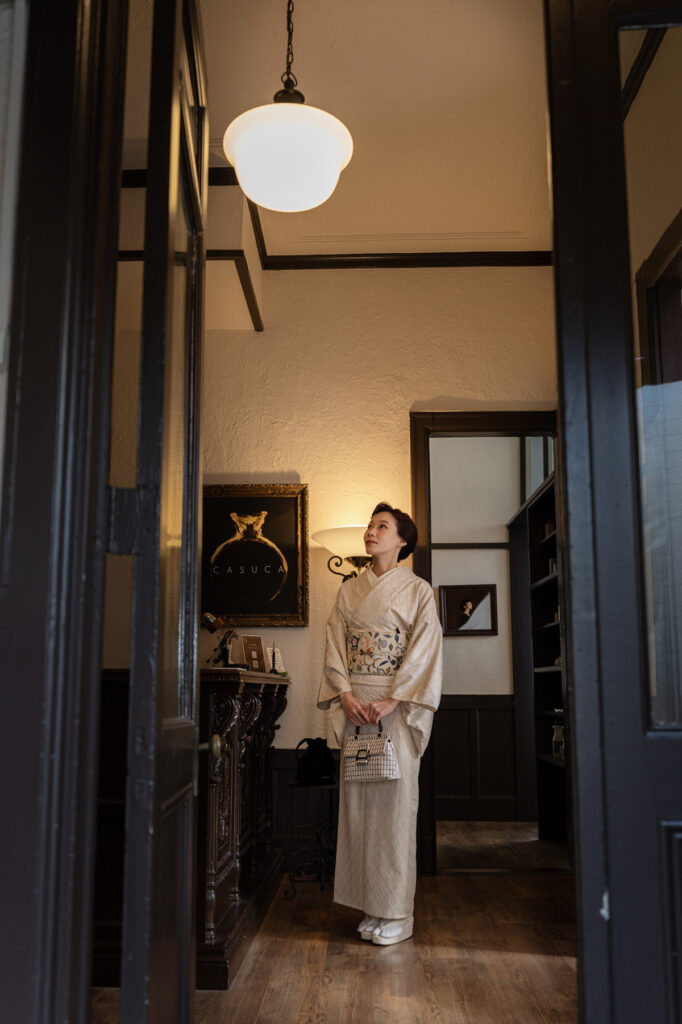

Breathing new life into this historic building was Tomoko Yasuno, a stylist known for her work on commercials, TV dramas, films, and stage productions. While considering the relocation of her brand CASUCA, she came across this residence. Captivated by a space that still radiated a refined, timeless presence, she decided to make it the site of her brand’s new beginning. As a tribute to the building, she named the boutique CASUCA HISTORIA, which opened in June 2024.
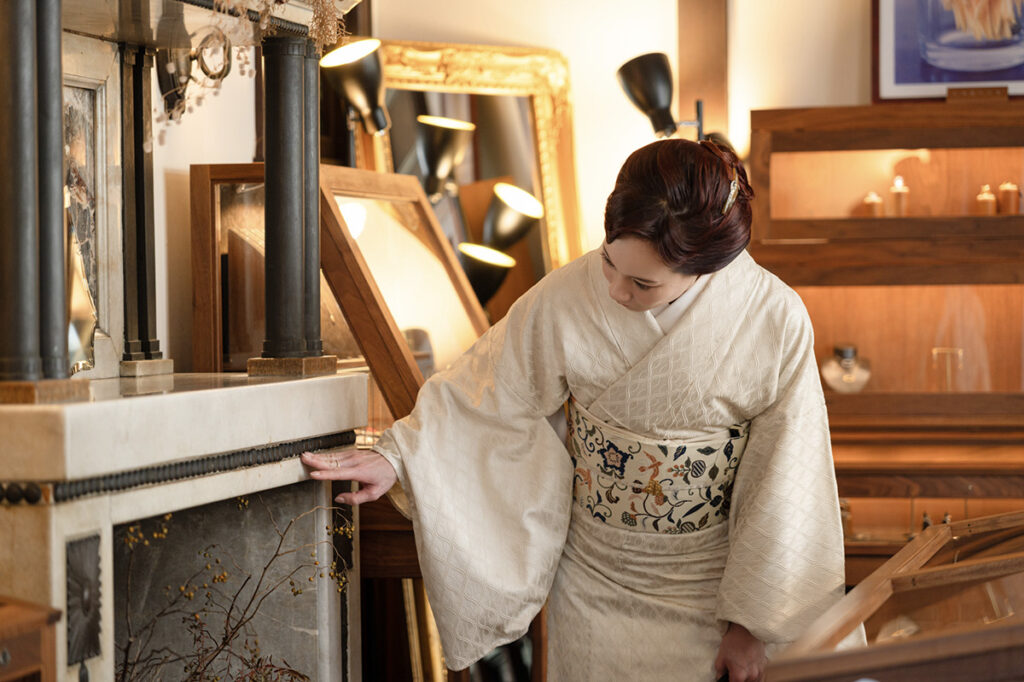
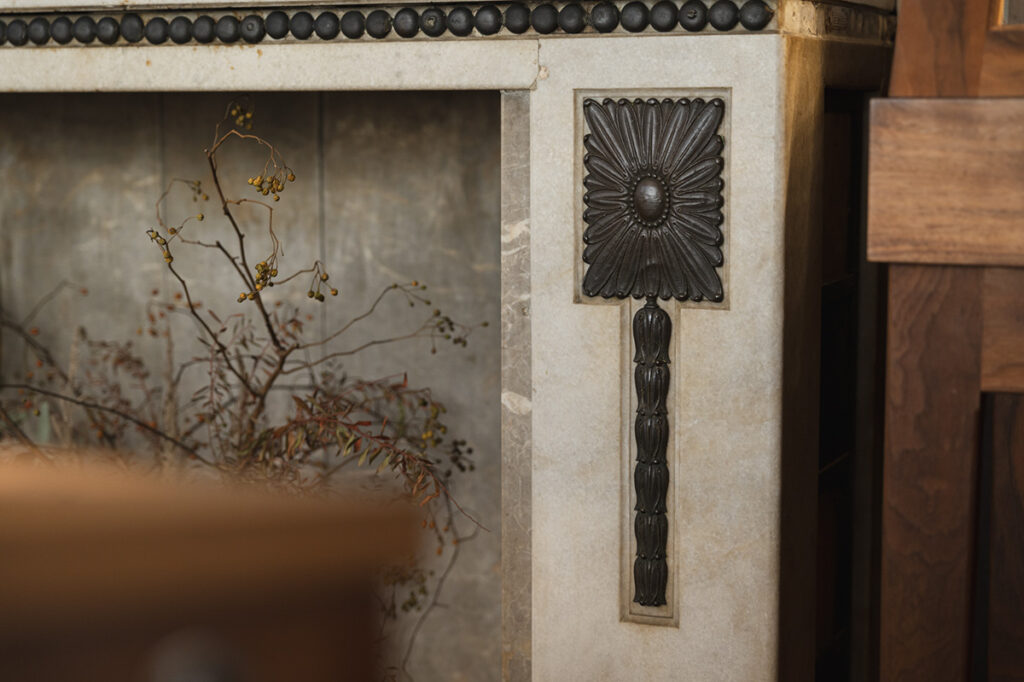
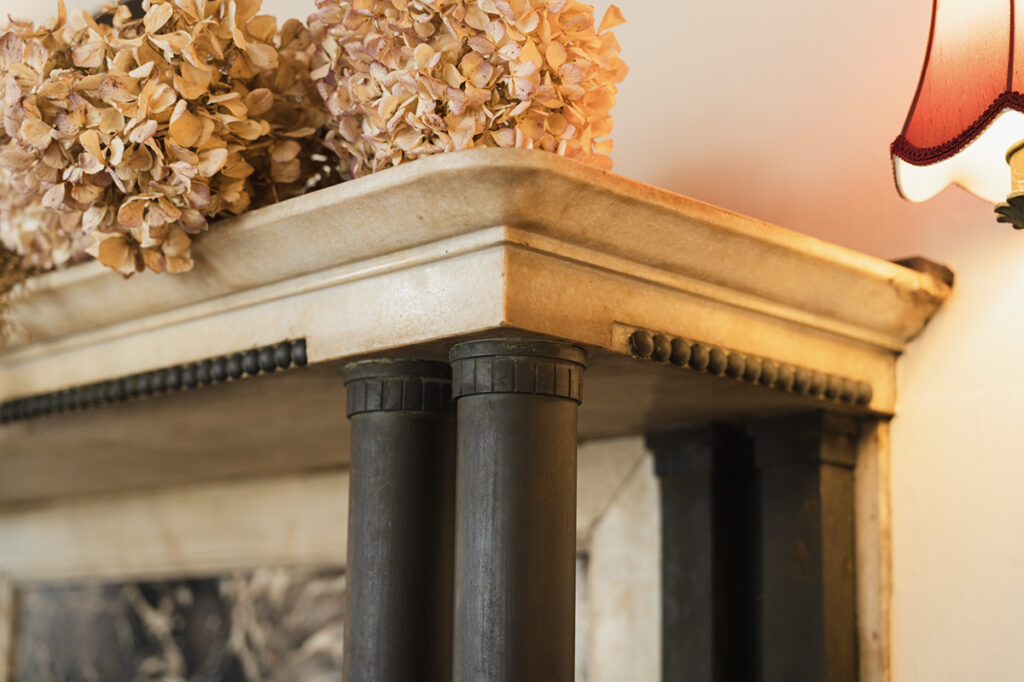
The marble mantelpiece is decorated with sleek Art Deco-style reliefs that catch Yulia’s eye.
Tomoko Yasuno says she is more moved by wildflowers quietly blooming beside a grand blossom or by things that are slightly off the beaten path, imperfect or marked by wear, than by things that are perfectly polished or overtly glamorous. Wanting to capture the idea of something that shines subtly in her brand name, she flipped through a Spanish dictionary using the sound “casuca” and discovered that it means “a ruined house.”
“Thinking of the words ‘ruined house,’ memories of hiding treasures with friends in neighborhood ruins as a child fondly came to mind,” Tomoko recalls.“It is the same with people. Those who have been hurt or faced hardship often grow kinder. I wanted to express the emotional ‘scars’ we all carry, in some form, as a kind of brilliance through jewelry.”
In this way, the story of the building as a clinic visited by people with physical wounds and CASUCA’s philosophy of transforming inner scars into wearable brilliance quietly merge across time within the space.
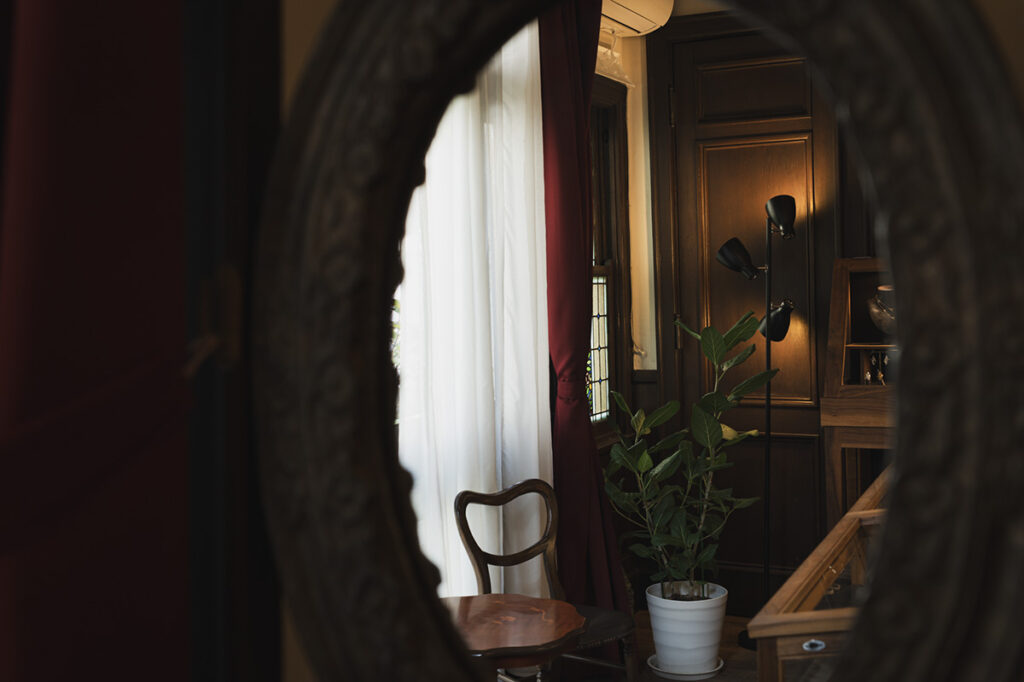

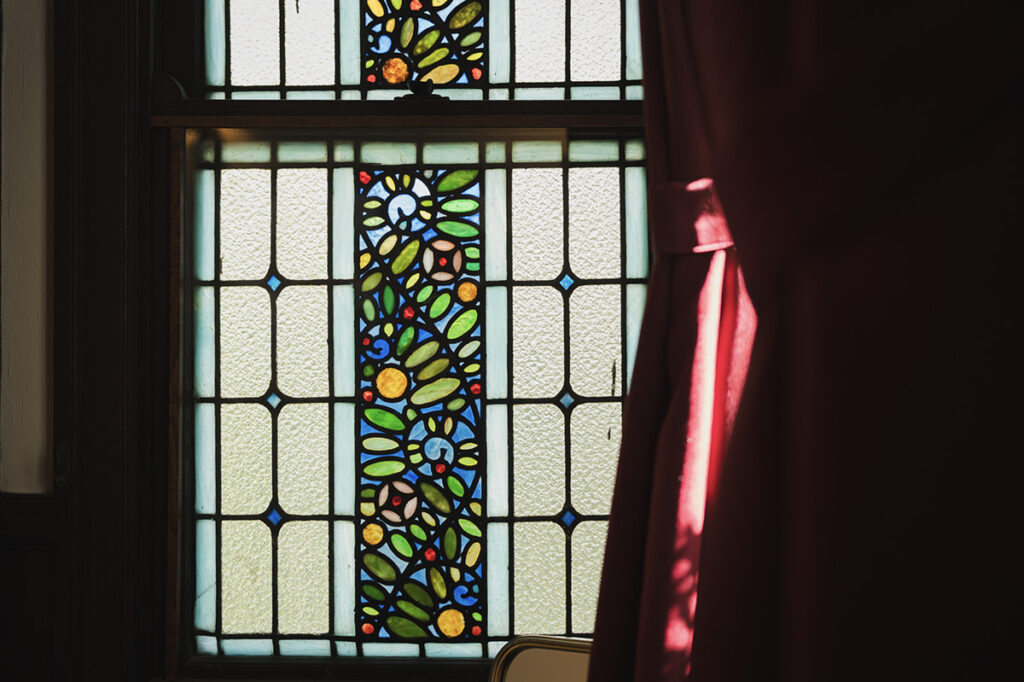
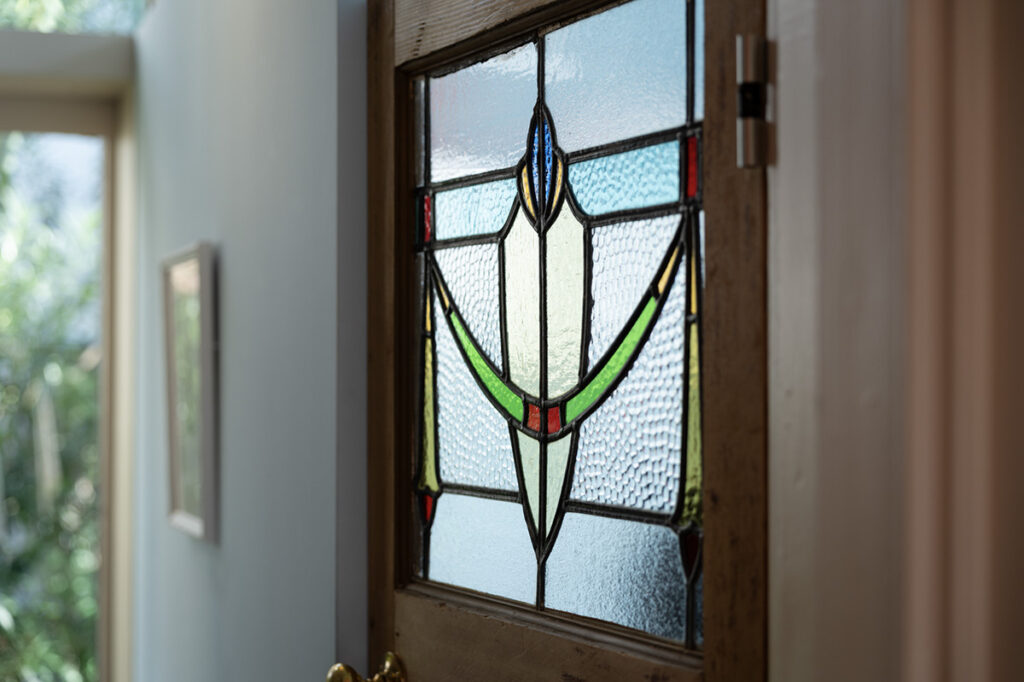
1st image: Looking into the room through the mirror feels like stepping back into an era long gone.
2nd image: The jewelry case, designed in an antique style, seems perfectly made for this salon.
3rd image: Burgundy curtains and stained glass add an air of refined elegance.
4th image: Stained glass newly installed by Tomoko to mesh with the building’s character.


1st image: In the garden, the door from the original CASUCA store is displayed like an art piece.
2nd image: The pale-colored walls were newly painted with the image of an English country house in mind.
A Clean, Bright White That Echoes the Building’s Past as a Clinic
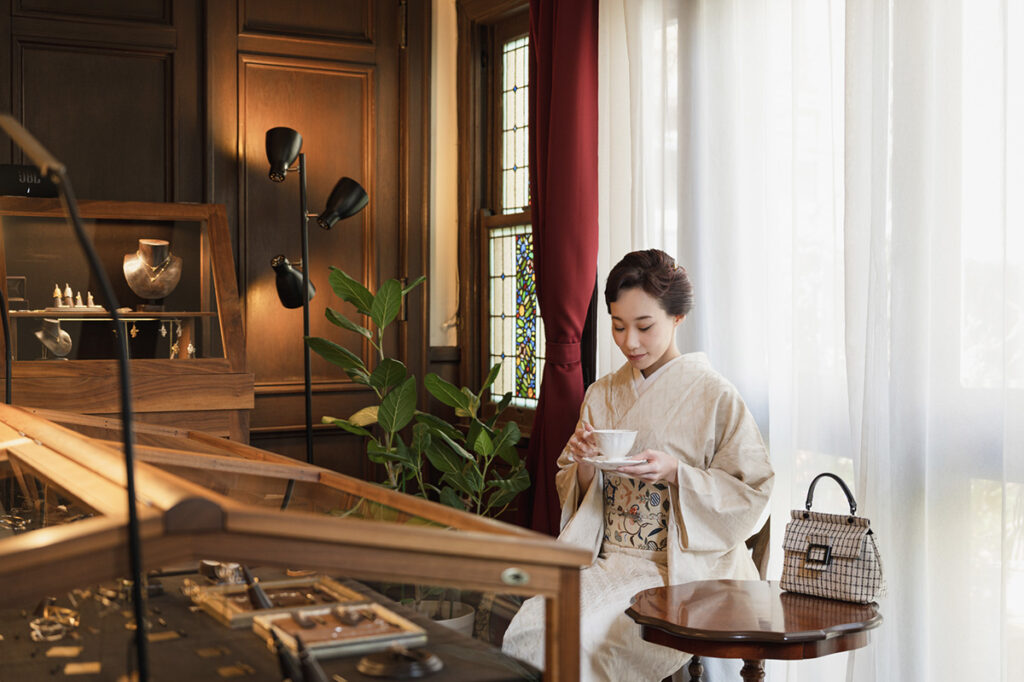

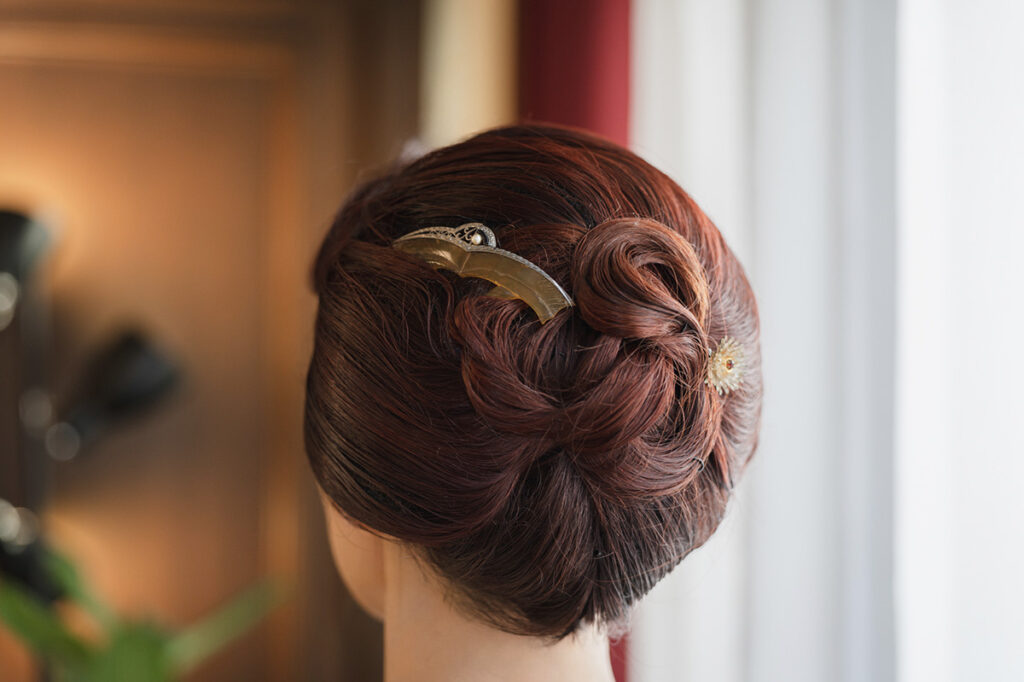
Yulia savors a graceful moment in the salon, which has preserved the charm of its original era. She incorporates the season into her obi-dome and echoes motifs inspired by the building’s history in her hairpin.
For the occasion, Yulia chose a milky-white kimono featuring a standing-wave ‘tatewaku’ pattern rendered in both weaving and embroidery. “Knowing that this space was once a clinic, I aimed for a clean, understated look. The obi I paired with it is a Nagoya obi from my ‘Kaen Yūchōmon’ series, which reinterprets a Meiji-era design by Kawashima Orimono. I put the outfit together to reflect the building’s history while also resonating with the contemporary vision of the jewelry store,” Yulia explains. Visiting in November, as winter approached, she accented the ensemble with a nandina-berry obi-dome and wore an Art Deco-style tortoiseshell hairpin in her hair, paying homage to the early Shōwa-era building.

From afar, the milky-white kimono seems almost plain, but with even the slightest movement, the tatewaku pattern comes to life. crafted with weaving and embroidery, it exhibits a subtle, elegant shimmer, while the antique obi-dome and hairpin further echo the building’s historic charm.
As Yulia’s gaze lingered on the obi-dome displayed in the jewelry case, Tomoko selected one inspired by a Bluebush acacia tree. “This tree was the symbolic tree of the Omotesando location where CASUCA used to be. Although we’ve moved, we designed this piece as a tribute to the tree that has always watched over us,” Tomoko explains. The Kaen Yūchōmon design produced by Yulia was now imbued with a fresh botanical sparkle.


From the collection of obi-dome, Tomoko selected a Bluebush-inspired piece just for Yulia.
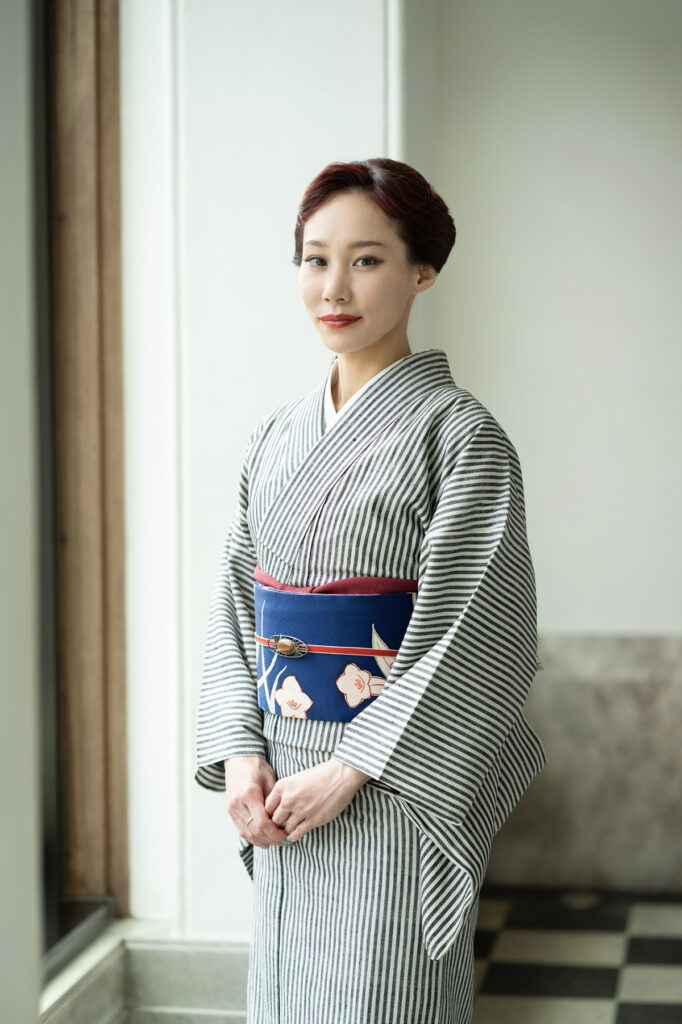
Mademoiselle Yulia
She began her career as a DJ and singer in her teens. Based in Tokyo, Mademoiselle Yulia is actively engaged globally, organizing kimono styling sessions, kimono workshops, and writing columns. In 2023, she co-founded the brand KOTOWA with friends to add stylish flair to everyday wear by incorporating kimono. She also runs a YouTube channel ‘Yulia’s Room’ where she uploads new content every week.
instagram: @MADEMOISELLE_YULIA
◾️The Location Featured
CASUCA HISTORIA
Address: 3-12-11 Meguro, Meguro-ku, Tokyo
Official website: https://casuca.jp/

